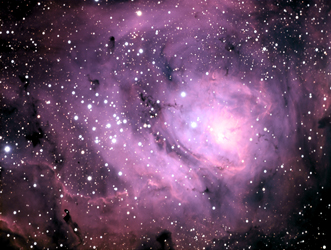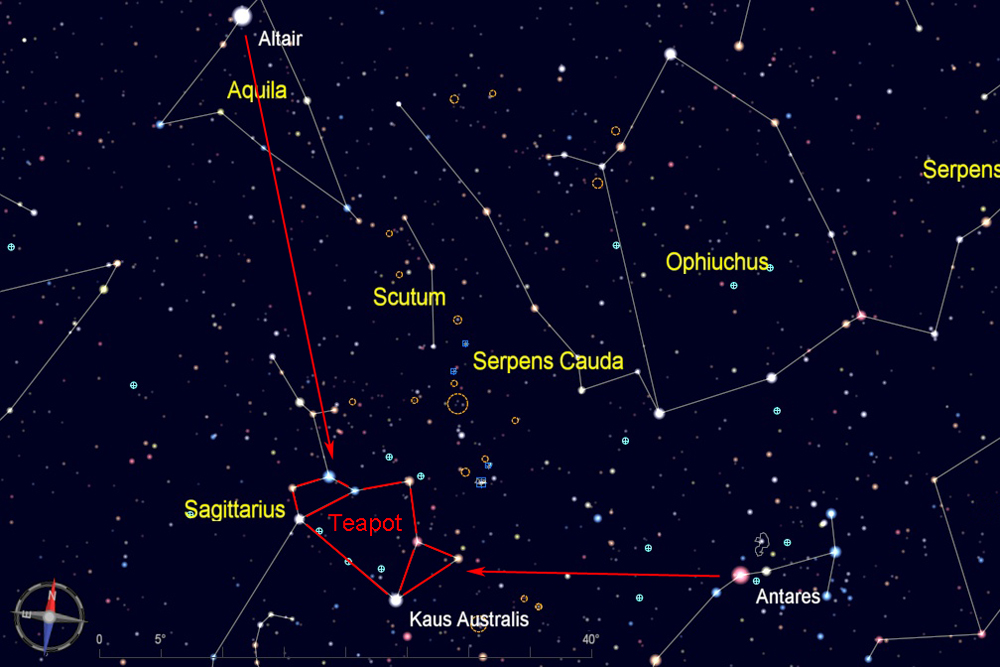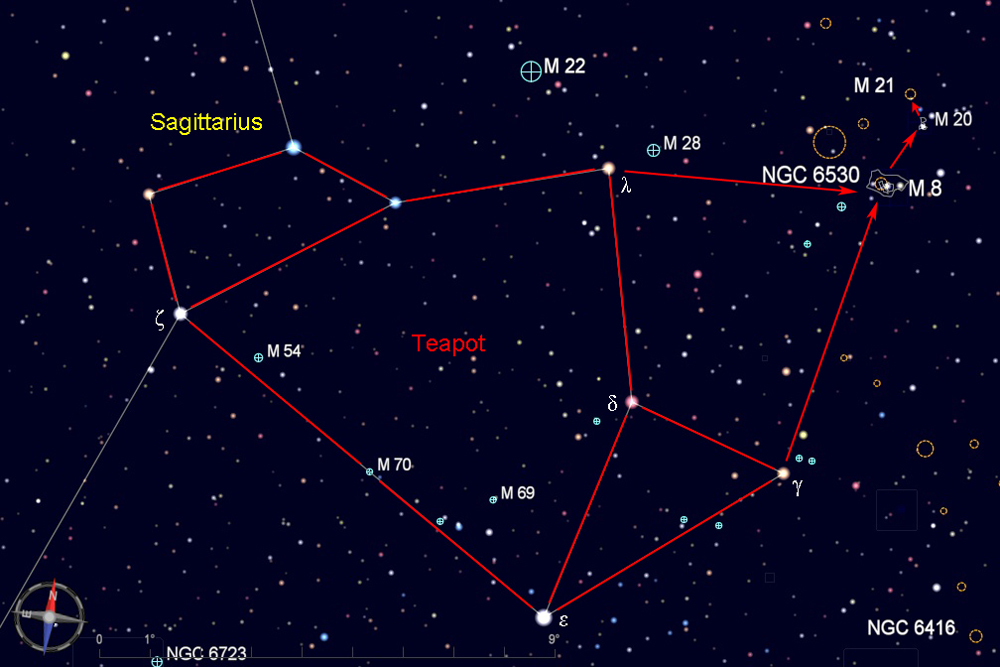| M8, the famous Lagoon Nebula, is one of the brightest nebulae in the sky, and one of the easiest to see with the naked eye. The nebula encompasses an open cluster, NGC 6530. To its north is M20, the Trifid Nebula. It consists of two hazy balls of light. With a medium or large telescope, you can see dust lanes in the larger and brighter section that divide it into three lobes. Just over 1/2 northeast of M20 is M21, an open cluster of several dozen stars that is ideal for telescopes of all sizes. |
 |
| Evening visibility: |
July-September |
| Best viewed with: |
binoculars, telescope |
| |
Printable chart (pdf) |
View larger image |
Directions:
From mid-summer to early fall, the distinctive teapot shape of Sagittarius can be seen low in the southern sky during the evening. It is about 50 degrees south of Altair (part of the Summer Triangle) and about 30 degrees east of bright red Antares. It is well worth learning to recognize the teapot, for it can guide you to dozens of beautiful deep-sky objects.
|
 |
| Use the stars that form the lid and spout of the Sagittarius teapot shape to guide you to a spot 6 degrees north of the spout's tip. There you will see M8, which is quite easy to see with the naked eye as a hazy glow if the night is clear and dark. After observing this beautiful mixture of nebula and stars, move 1.5 degrees north-northwest to reach the much fainter M20. Finally, move just about 1/2 degree to the northeast to spot the stars of the open cluster M21. |
 |
| Star charts created with Cartes du Ciel |
| |
| |


